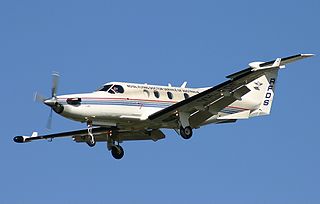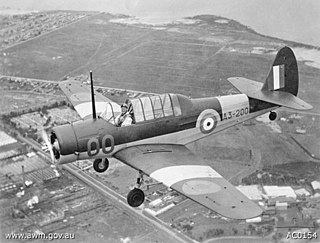See also
Aircraft of comparable role, configuration, and era
| Wamira | |
|---|---|
| Role | Trainer aircraft |
| Manufacturer | Australian Aircraft Consortium (Commonwealth Aircraft Corporation, Government Aircraft Factories and Hawker de Havilland) |
| Status | Cancelled 1986 |
| Primary user | Royal Australian Air Force |
| Number built | 0 (prototype incomplete) |
The AAC Wamira was a turboprop military trainer aircraft, designed for the Royal Australian Air Force (RAAF) by the Australian Aircraft Consortium (AAC). The project was cancelled shortly before the first prototype was completed.
The story of the aircraft and its creators are interwoven, as AAC was set up expressly to design and build the aircraft. The consortium came into being in 1981, with its members being the three main aircraft manufacturers in Australia at that time—the Commonwealth Aircraft Corporation (CAC), the Government Aircraft Factories (GAF), and Hawker de Havilland (HdH). The RAAF, which expressed an intention to buy 69 aircraft, specified a turboprop trainer of broadly conventional tricycle undercarriage low-wing layout, to be powered by a Pratt & Whitney Canada PT6A-25C engine. [1] Unusually however, its two seats were to be in a side-by-side configuration. The RAAF also specified that the type be fully aerobatic, be capable of cross-country navigation and weapons training, have a 200 knots (370 km/h) cruising speed at sea level, and a minimum service life of 20 years and 8,000 flying hours. [1] AAC signed a design and development contract in June 1982 and began work to produce an aircraft to meet the design criteria under the designation A10.
When it became clear that the aircraft as specified by the RAAF had limited appeal to other potential users, a version with the more usual tandem seating was designed, this being designated the A20; both models were named Wamira. A Memorandum of Understanding was signed with Westland Aircraft to establish a joint venture to market (and hopefully sell) the A20 in Europe. [2] The A20 was subsequently entered in the competition to replace the Royal Air Force (RAF) fleet of BAC Jet Provosts, [3] a competition eventually won by the Short Tucano. An engineering mockup (EMU) was produced in Australia consisting of stub wings and a fuselage from the fin fillet forward. Made from wood & alloy it utilised real aircraft components such as ejection seats, control columns, rudder pedals etc. and was shipped to the UK, appearing on the Westland stand at Farnborough '84. However the Wamira was never a serious contender due to it being at the design stage whilst the other three contenders were flying aircraft.
By the time the RAF competition was lost, the whole Wamira project was in doubt. This was partly due to delays in completing the prototype, but mainly due to huge cost overruns. At the time, the RAAF was replacing its front-line fighter fleet and wanted an Airborne Early Warning platform and inflight refuelling aircraft to enhance the new type's capabilities, [1] and an Auditor-General report found that the Wamira project cost was likely to be more than double that originally estimated. [1] In July 1985 it was announced that the RAAF trainer requirement was now a competition, and that the Short Tucano, Pilatus PC-7 and PC-9 (all of which had tandem seating) would be considered as well as the Wamira. The same month CAC was absorbed by HdH, meaning that HdH now had a two-thirds share in AAC, and quickly became sole owner of the Wamira project when it bought GAF's share. [4] On 16 December 1985 the Pilatus PC-9 was announced as the winner of the competition and the Wamira project was cancelled. [5] The HdH partners were later jointly responsible for licence-production of the PC-9.
Endeavour Aerospace acquired the Wamira design and associated rights from the Australian government in 2000. The aircraft design was subsequently renamed Phoenix, with Endeavour proposing variants with either side-by-side or tandem seating. [6] Endeavour Aerospace believes that the design has potential in the general aviation market as a pilot trainer and recreation/sports/utility aircraft. The original drawings and design records have been kept in safe storage since being acquired.
The A-20 EMU resided at the Westland Helicopters Weston factory until 'Heseltine-gate' in 1986 closed the site. The EMU returned to Australia in 2012 via a group of enthusiasts who raised the funds for transport and fumigation. The A-20 EMU is now in storage at an aircraft restoration facility in the western suburbs of Melbourne awaiting a full overhaul.[ citation needed ]
Data from World Trainer Directory and Jane's All the World's Aircraft [7] [8]
General characteristics
Performance
Armament
4x underwing hardpoints, stressed for 250 kg (550 lb) each inboard and 150 kg (330 lb) each outboard
Aircraft of comparable role, configuration, and era

The CASA C-101 Aviojet is a low-wing single engine jet-powered advanced trainer and light attack aircraft designed and manufactured by Spanish aircraft company Construcciones Aeronáuticas SA (CASA).

The Short Tucano is a two-seat turboprop basic trainer built by Short Brothers in Belfast, Northern Ireland. It is a licence-built version of the Brazilian Embraer EMB 312 Tucano.
de Havilland Aircraft Pty Ltd (DHA) was part of de Havilland, then became a separate company. It acquired the Commonwealth Aircraft Corporation in 1985 and was purchased by Boeing in 2000 and merged with the Boeing owned AeroSpace Technologies of Australia to become Hawker de Havilland Aerospace Pty Ltd. In 2009, the name was changed to Boeing Aerostructures Australia (BAA) and is a subsidiary of Boeing Australia Ltd.

The Pilatus PC-12 is a single-engine turboprop passenger and cargo aircraft manufactured by Pilatus Aircraft of Stans, Switzerland, since 1991. The main market for the aircraft is corporate transport and regional airliner operators. The PC-12 is the best-selling pressurized single-engine turbine-powered aircraft in the world and has been for several consecutive years, with 1,700 deliveries as of October 2019.

The Pilatus P-3 was a military training aircraft built by Pilatus Aircraft of Switzerland.

The Pilatus PC-9 is a single-engine, low-wing tandem-seat turboprop training aircraft manufactured by Pilatus Aircraft of Switzerland. Designed as a more powerful evolution of the Pilatus PC-7, the PC-9's first flight was made in May 1984 after which certification was achieved in September 1985. After this, the first production orders for the type were received from the Royal Saudi Air Force, with deliveries commencing in 1985. Since then, more than 250 airframes have been produced across five different variants and the type is employed by a number of military and civilian operators around the world, including the Swiss Air Force, the Croatian Air Force, and the Royal Thai Air Force.

The Pilatus PC-21 is a turboprop-powered advanced trainer with a stepped tandem cockpit. It is manufactured by Pilatus Aircraft of Switzerland.

The Pacific Aerospace Corporation CT/4 Airtrainer series is an all-metal-construction, single-engine, two-place with side-by-side seating, fully aerobatic, piston-engined, basic training aircraft manufactured in Hamilton, New Zealand.
The IAR-825 Triumf is a Romanian-designed tandem multirole trainer aircraft based on the IAR-823 built for the Romanian Air Force. The aircraft is roughly in the same class with the Brazilian EMBRAER Tucano. The IAR-825 is equipped with the Canadian Pratt & Whitney Canada PT6 turboprop engine. The type's first flight took place on the 12 June 1982.

The PZL 130 Orlik is a Polish turboprop, single engine, two seat trainer aircraft.

Sunstate Airlines is a subsidiary of Qantas which operates regional flights under the QantasLink banner throughout Queensland, and between Brisbane and Canberra. Its head office is in Bowen Hills, Brisbane.

The CAC CA-25 Winjeel is an Australian-designed and manufactured three-seat training aircraft. Entering service with the Royal Australian Air Force (RAAF) in 1955 as a basic to advanced trainer, it served in this role until 1975. Later, it was used in the Forward Air Control (FAC) role for target marking until 1994, after which it was retired from RAAF service.

The CAC Wackett Trainer was the first aircraft type designed in-house by the Commonwealth Aircraft Corporation of Australia. The name was derived from its designer Lawrence Wackett. "In acknowledgement of the CAC Manager's enormous contribution, the RAAF were to call the aircraft the Wackett Trainer"

The NDN Firecracker is a single-engine aircraft designed as a military trainer.

The Gulfstream American Peregrine 600 was a military trainer aircraft developed in the United States in the early 1980s but which did not progress further than prototype stage. Developed from the company's Hustler business aircraft, the Peregrine shared the same wings, empennage and rear fuselage, but had a new forward fuselage with side-by-side seating for the pilot and instructor. The aircraft was developed as a contender in the United States Air Force's Next Generation Trainer program, but was ultimately passed over in favor of the Fairchild T-46. Attempts to market it to the air forces of Australia, New Zealand, Japan, and China also proved unsuccessful, and the project was canceled in 1985. The wing and rear fuselage design was incorporated in the Gulfstream Aerospace Peregrine business aircraft.

The Goair Trainer is an Australian single-engined, two-seat, training or touring cabin monoplane designed and built by Goair Products at Bankstown Airport in Sydney, Australia.
The Brumby Aircraft Brumby 600, also known as the Brumby LSA 600 is an Australian single-engined, two-seat, training or touring cabin monoplane. The aircraft is built by Brumby Aircraft Australia as a production or kit aircraft at Cowra Airport near Cowra, New South Wales, Australia. Designed to meet regulations governing light sport aircraft (LSA), it was developed from the Goair Trainer.

The UTVA Kobac was a prototype Serbian single-engine, low-wing tandem-seat turboprop training/light attack aircraft manufactured by Pančevo based UTVA Aviation Industry and designed by the Military Technical Institute Belgrade. Revealed as a mockup on 02 September 2012 during the Batajnica 2012 Air Show, the aircraft's first flight was planned for 2013, but was never realized.

The Pilatus PC-24 is a light business jet produced by Pilatus Aircraft of Switzerland. Following the success of the PC-12 single engine turboprop, work on the twin engine jet began in 2007 for greater range and speed, keeping the rugged airfield capability. The aircraft was introduced on 21 May 2013 and rolled out on 1 August 2014, with the maiden flight on 11 May 2015. The PC-24 received EASA and FAA type certification on 7 December 2017 and the first customer delivery was on 7 February 2018. Powered by two Williams FJ44 turbofans, it competes with the Embraer Phenom 300 and the Cessna Citation CJ4.

The Diamond DART is a series of tandem, two-seat civilian and military turboprop trainers manufactured by Austrian Diamond Aircraft, "DART" meaning Diamond Aircraft Reconnaissance Trainer.
| Wikimedia Commons has media related to CAC aircraft . |